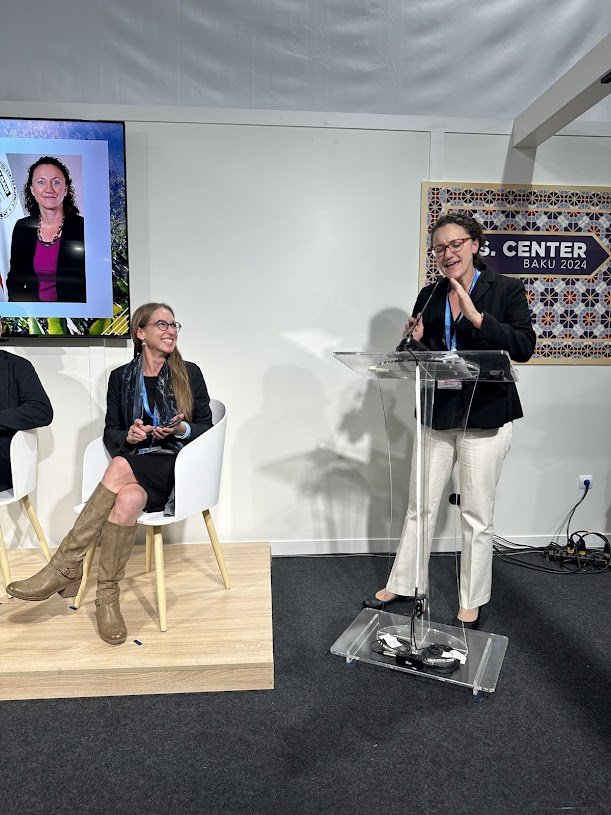CA4SH at COP29: Advancing Soil Health and Green Fertilizers for Climate, Economic, and Nutritional Resilience
On 19 November 2024, CIFOR-ICRAF, RTI International, the Coalition of Action 4 Soil Health (CA4SH), the U.S. Department of Agriculture (USDA) and the Sustainable Productivity Growth (SPG) Coalition co-hosted a side event at the US Centre at the UN Climate Conference COP29 in Baku, Azerbaijan.
The speakers stressed the importance of investing in soil health, sustainable agricultural productivity growth, and green fertilizer solutions to strengthen food and nutrition security, restore ecosystems, and drive sustainable, inclusive economic growth. In short, healthy soils and sustainable agricultural productivity are fundamental to achieving the UN SDG’s, and this session highlighted the need for practical solutions to support farmers and land managers to transition from monocrop agriculture to regenerative systems.
Healthy soil is the foundation of our food systems and provides essential ecosystem services, including carbon sequestration and enhanced food and nutrition security. Keynote speaker and moderator, Dr Leigh Ann Winowiecki, Soil and Land Health Research Lead at CIFOR-ICRAF and Co-Lead of CA4SH, is laser focused not only on scaling soil health, but community health and livelihoods, drawing on multistakeholder partnerships to make it happen. Dr Winowiecki posed a challenge to the session’s three panelists, aiming to highlight ‘good news’ from the world of soil health solutions. "We need innovative, out of the box but practical financial and policy tools to support soil health," said Dr Winowiecki in her opening remarks.
One such solution shared by Daniel Lapidus, Director of Sustainable Agriculture and Food Systems at RTI International, was "green" fertilizer. If we replace the production of conventional fertilizer with green fertilizer, made from green ammonia, we can alleviate 500 million tonnes of carbon dioxide emissions annually. Current ammonia production—70% of which is used to make fertilizer—is far from green. It consumes a lot of energy derived from burning fossil fuels and it emits carbon dioxide, contributing to global warming. For many farmers and land managers in the African drylands, conventional fertilizer is the most readily available option for improving the nutrient content of their soil and the food they produce in it. Daniel Lapidus shared insights on the potential and economic viability of producing “green” fertilizer on the continent to reduce emissions, food insecurity, and dependence on volatile international fertilizer import prices while offering broader developmental benefits.
"It won't be easy but the foundation is in place to take green fertilizer from a radical idea to reality. Like many of the challenges, the technical solutions are at our fingertips, so let's seize the opportunity." - Daniel Lapidus
Domestic green fertilizer projects will necessitate concessional development finance, de-risking instruments, and regulatory incentives to reduce the cost of capital to move forward. John Mundy, Climate Finance and Technology Director for One Acre Fund, discussed the complicated, but practical world of financing farmers’ transitions to sustainable agricultural systems, build on healthy soil.
"A monoculture maize system is no longer going to viable in the face of climate change,” shared John. "We see farmers fields loose around 50-100$ worth of nutrients on every acre, lost to soil erosion every year." This is an alarming loss, especially considering that the 500 million smallholder farmers, who produce about ⅓ of the World's food, also comprise a large proportion of the World's poor. But poverty is a difficult cycle to break without support.
One Acre Fund provides funding for smallholder farmers to invest in sustainable farming practices. "When we talk about blended finance, we're mixing grants, concessional working capital, and hopefully, we will include carbon financing in the future,” said John Mundy, calling for public-private partnerships to invest in farmers.
No one sector or organization can take on the challenge of scaling global soil health alone, and Olutayo (Tayo) Akingbe, Climate Advisor for the USDA to Foreign Agricultural Service, underscored the need for place-based, flexible and locally-led solutions that are implemented through multi-stakeholder partnerships.
"It is important that these tools and practices are region-specific and can adapt to the on-the-ground reality of our producers, These actions should have co-benefits for climate mitigation, conservation, and sustainability. Our approach is that successful sustainable solutions are location flexible and locally-led.”- Tayo Akingbe
Tayo also called on knowledge generation and dissemination as a key tool for farmers to learn from each other, and to equip multistakeholders with targeted actions, interventions, and solutions that are locally relevant and locally led.
Rounding out the session, Ann Vaughan from USAID's Bureau for Resilience, Environment, and Food Security (REFS) emphasized the role of farmers and the imperative that we see them through to healthy, sustainable agricultural systems for livelihood and environmental co-benefits. “Taking that knowledge and making sure it's fit to purpose on the ground can really have a 25% to 30% increase in productivity,” she shared. “It can be a huge difference for farmers who are living on the edge and moving from subsistence to actually being able to sell more and be able to send [their] kids to school."
People living below or near the poverty line can not hold the weight of the climate emergency and global food security on their own. We need to urgently galvanize multi-stakeholder action to support, finance, and monitor healthy soil ecosystems while advancing green fertilizer production worldwide.
This session at COP was an excellent representation of how sectors can learn from and lean on each other to support smallholder farmers scale soil health, globally.




















































































